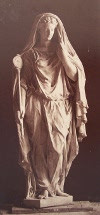
When Louis XIV asked, “What time is it?”, he was told, “Whatever time your majesty desires.”
When Louis comforted the duke of Saint-Aignan on the death of his son, Roger de Rabutin wrote, “It is only near him that a parent can find some pleasure in losing his children.”
When Louis asked Boileau’s opinion of his verses, the poet said, “Ah, sire, I am convinced that nothing is impossible to your majesty. You desired to write some poor rhymes, and you have succeeded in making them positively detestable.”
During a lecture on chemistry, Louis Jacques Thénard told Charles X, “These gases are going to have the honor of combining before your majesty.”
The subjects of James I expressed the wish that he might reign over them as long as the sun, moon, and stars should endure. “I suppose, then,” muttered the king, “they mean my successor to reign by candlelight.”



